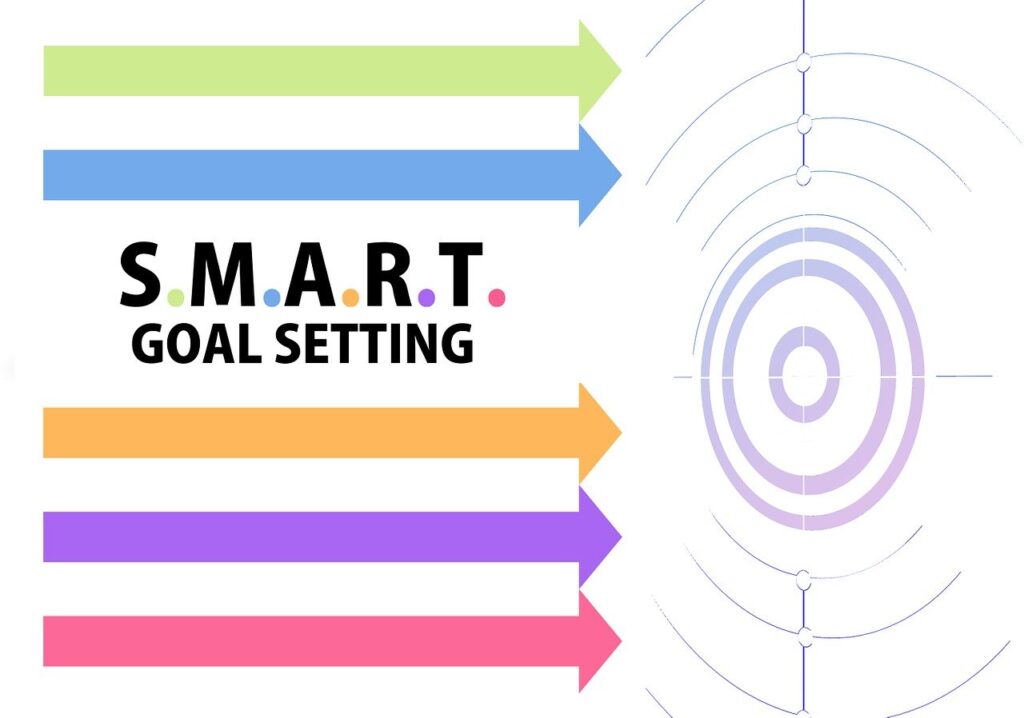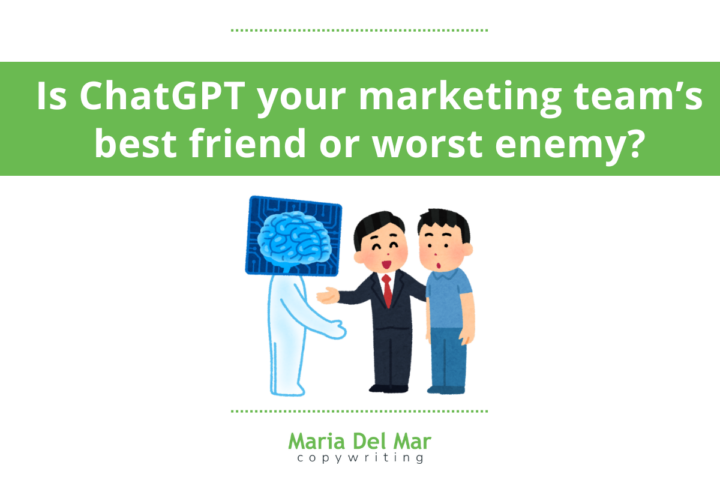Are you struggling to know where to start when creating a corporate blog for your B2B technology company? It’s well known that writing about B2B tech content effectively for your corporate blog can be a tough and challenging task.
This challenge occurs not just because B2B writing requires a different approach than most B2C content. Writing for tech companies involves carefully balancing the language to speak to your target audience without overwhelming them with tech industry jargon.
Despite these challenges, your focus should always be on generating high-quality blog content, which is a good way for tech companies to increase their organic web traffic, generate more high-quality leads, and establish themselves as industry leaders.
To help you with these writing challenges, here are some key tips for creating B2B tech content effectively.
Know your target audience

Let me break it down for you: if you don’t know who your audience is, you can’t create tailored content for them.
To identify your right audience, you need to create one or several buyer personas– realistic profiles of fictional people that exemplify the most important characteristics shared by your target audience.
For example, you’re in the business of developing software solutions. While your target audience may include IT managers, software developers, CTOs, and even CEOs, the job titles alone won’t craft a robust buyer persona. You need to know more information to create a compelling message that truly resonates with your audience.
When you build your buyer personas, for example, for a company that develops software solutions, you can consider the following questions:
- What kinds of tech companies could benefit from your software solutions?
- What roles do decision-makers in these tech companies typically hold?
- How can your software solutions contribute to achieving the technological goals of these decision-makers?
- What daily challenges do these decision-makers face in the dynamic world of B2B tech?
- What non-intrusive channels can you use to connect with them effectively?
- What preferences do your B2B tech prospects have when it comes to making purchasing decisions?
Knowing why your ideal customers make certain choices or have specific behaviours is essential to understanding what they want in your tech product. The more you know about your audience, the higher your chances are of reaching decision-makers at the right time with the most effective message.
Do your research

How do you show what you know in your industry?
The answer is simple: conduct research within your niche.
This doesn’t just help your brand develop new ideas and find solutions for addressing customer needs and pain points; it also shows where their needs are shifting and what developments are occurring in the tech landscape, so you can take action in advance.
The best sources that can help you demonstrate your expertise, authority, and trustworthiness are:
- Industry publications: Subscribe to reputable publications like TechCrunch, Wired, or industry-specific journals for the latest insights.
- Market research reports: Access market reports from firms such as Gartner, Forrester, or IDC to gain valuable industry perspectives.
- Tech conferences and events: Attend conferences like CES, Web Summit, or industry-specific events to stay updated on cutting-edge technologies and network with professionals.
- Competitor analysis tools: Use tools like SEMrush, Ahrefs, or SimilarWeb to monitor competitors’ online activities and strategies.
- Online forums and communities: Participate in platforms like Reddit, or industry-specific forums to understand common challenges and discussions within the B2B tech community.
It’s important that, before publishing, you double-check that what you’re saying is correct. You can additionally use your research time to consider the perspective you’re going to use for your article.
Set SMART goals

Your B2B content strategy has to be flexible. It can vary for each new piece of content you generate, depending on what you want to achieve with it.
First, you have to establish your goal and then craft your B2B tech content, whether it’s a blog, article, or website content. When you understand the specific goals for each piece, you can tailor your approach accordingly.
For instance, a well-researched white paper might be the ideal choice if your goal is to demonstrate thought leadership. On the other hand, if your objective is to engage your audience and foster community, you can consider creating an interactive webinar. Your content strategy should align with your unique goals and the desired outcome for each piece.
Thanks to establishing goals, your content strategy can be more efficient and specific because they point you in the right direction for reaching the people who are most likely to engage with your content. But if you want to get even better results, your goals should be SMART:
- Specific
- Measurable
- Achievable
- Realistic
- Time-bound
Let’s imagine you want to increase your brand engagement. While it’s an admirable aspiration, it doesn’t quite qualify as a SMART goal.
Now, consider setting a SMART goal, such as increasing your social media engagement by 15% within the next quarter—this goal is specific, measurable, timely, and, based on your current metrics, realistic and achievable.
With a SMART goal defined and detailed buyer personas in hand, crafting your content strategy becomes more straightforward.
Develop a content calendar outlining blog posts, social media updates, and other content pieces, each with specific expected outcomes. This structured approach allows you to easily track and assess whether your content efforts are effectively driving you toward your engagement objectives.
Choose the right content

Creating tech content could be tough as hell. Finding the right balance between technical depth and approachability is essential.
If you are excessively technical, your audience is more likely to become distracted and leave your website. However, if you are too generic, visitors will not discover the exact answers they are seeking, and you risk losing important business opportunities.
As a B2B tech company, you’re certainly aware that your target audience is already familiar with the topics you discuss. Even if they’re not specialists, you’ll need to emphasise the aspects that set your items apart from your competitors.
Furthermore, your readers will be interested in figures and facts as they seek business and growth opportunities. They want to know everything about your product’s potential influence on their business, including its economic and financial aspects.
But be realistic; you can’t build a solid content strategy with only general articles and light social media messages. So you have to think about how you can attract and retain the right audience.
To help you answer this question, here are some tips that you can use:
- Try to identify trends in the industry. Also, some topics can help you attract more people to your website or business blog
- Explore innovative content types beyond traditional blogs, such as videos, infographics, podcasts, etc. These diverse B2B content examples can help tech content writers deliver information in engaging formats, attracting and retaining the right audience while demonstrating industry authority.
- Identify pain points and gaps in your industry
- Go on forums or participate in industry events
- Read relevant publications in your niche
- Analyze your competitors
Remember to optimize your content for search

When you start developing your content strategy for your B2B tech company, it is critical to begin with SEO in mind. Good SEO tactics help you develop high-quality content that is appealing to search engines, allowing you to acquire more organic visitors.
These are the most crucial factors to consider when you start your SEO strategy for your B2B tech company:
- Do keyword research: Conduct thorough keyword research to identify the terms and phrases relevant to your B2B tech industry. Utilize tools like Google Keyword Planner, SEMrush, or Ahrefs to discover high-traffic and low-competition keywords that align with your content objectives.
- Produce relevant and valuable content: Search engines prioritize content that answers user queries effectively, so focus on solving problems, addressing industry trends, and offering insightful information.
- Follow a logical structure for your website and blog: Create clear categories, use descriptive headings, and ensure a hierarchical order for your content. A well-organized structure not only aids in SEO but also improves the user experience, reducing bounce rates and encouraging longer stays on your site.
- Use external links from authoritative websites: Including external links from authoritative websites within your industry can build credibility and improve your search rankings.
- Use internal links between pages on your site. This helps search engines navigate through your content, understand the relationships between different pages, and improve the overall coherence of your site. Link relevant blog posts, articles, or product pages to guide users through a logical content journey.
Be clever about what you post on social media

Your presence on different social media channels must be aligned with your content strategy. Remember that every tweet, image on Instagram, or post on LinkedIn has to appeal to your target audience.
There are two major elements to consider before creating your social content strategy:
- Choose the right platform depending on where your target audience is most active
Normally, a B2B tech company should maintain a Facebook business page, a Twitter account, a substantial presence on LinkedIn, and, if applicable, a YouTube channel for video content dissemination.
Also, depending on your type of industry, you may decide to add more social accounts to your list. Managing numerous platforms can become time-consuming and less efficient. Instead, focus on the top three or four platforms that align best with your audience and content strategy to maximize your social media impact.
- Adapt the content for each social media channel
Each social media network targets a certain audience with various content consumption behaviours. This suggests the need to provide individual material for each platform, even if the basic message is the same across them all.
For instance, concise copy finds its place on Twitter, whereas short videos resonate better on Facebook, or on LinkedIn, longer videos are more fitting for audience engagement.
Constantly measure and improve your content strategy

The tech industry is a synonym for the future and innovation. So, this has to be reflected in your content marketing strategy, which has to evolve with your company.
To continue to be effective, your B2B technology marketing approach must be dynamic. What was effective yesterday may provide different results during the next week. Staying on top of industry developments allows you to be a pioneer in solving new difficulties.
For your B2B technology marketing strategy to remain effective, you can:
- Regularly scrutinize your data
- consistently evaluating your actions against outcomes
- Leverage insights and analytics to refine buyer personas, constructing more detailed profiles.
- Observe how people’s needs evolve with each new technology introduction and utilize this understanding to bridge communication gaps with prospects.
With all this knowledge, you can create a B2B tech content strategy that truly stands out.
Employ a professional B2B tech content writer

In a nutshell, writing B2B content is tough and complex; you need to find the right balance between engaging and accurate content while being consistent with your brand’s tone of voice.
For that reason, as an experienced SEO copywriter & B2B content marketer, I understand the challenges you face. If the possibility of navigating this complex scenery seems overwhelming, I’m here to simplify the process for you.
My expertise goes beyond the art of writing; it also includes a thorough understanding of your technology industry. This guarantees that the content I write not only catches attention but also resonates with your target audience and aligns with your brand’s identity.
If you’re ready to start your B2B tech content strategy, I’m here to guide you through every step of the process.

